pet products
A few tips for selecting and purchasing Pet Products.
Having a pet is one of life’s greatest pleasures.
Whether it’s first thing in the morning or after a long day at work, the unconditional love and loyalty we receive from our pets can give us a huge lift.
It’s also a huge responsibility because pets rely on us for everything. Not only do they need food, but they also need fresh, clean drinking water, a safe place to sleep, and something to do when you are at work or otherwise occupied.
Our pets, like us, enjoy feeling safe, loved, appreciated, healthy, and happy and there’s a number of things we can obtain that can go a long way toward their overall happiness.
With so many pet products on the market, deciding what is required can be difficult and requires a large amount of thought and research.
The ‘Pet Products’ we need to source are somewhat determined by the breed, characteristics or qualities of our Pets. Whether your pet is a Dog, Cat, Rat, Bird, Rabbit, or Guinea Pig, take into consideration their size, personality, home setting, trainability, exercise needs, grooming, inside or outside pet (or both), any health problems, and specific needs when creating your list of Pet Products required.
Avoid wasting your money by checking the quality or suitability. Pet beds, for example, must be comfortable and the right size for your pet to enjoy sleeping on them; otherwise, they may use your bed or the lounge instead.
If your pet spends most of their time indoors, although not essential, it’s generally a good idea to colour-code their pet items according to the room they spend the most time in.
From Toys to pet accomModation
There is a number of high priority Pet Products for a new pet owner to consider.
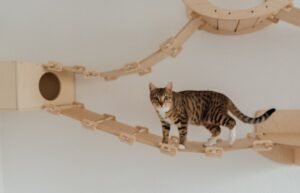
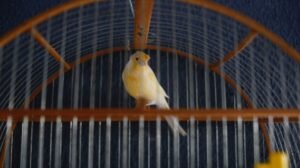



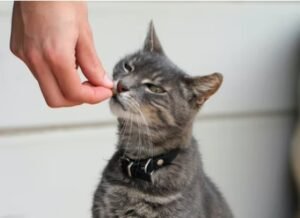

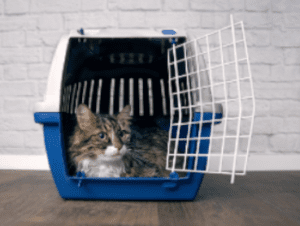
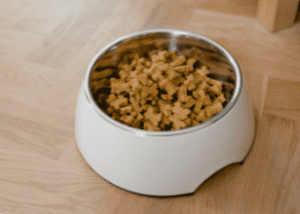
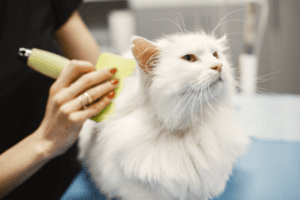
Understanding the importance of Cat Toys
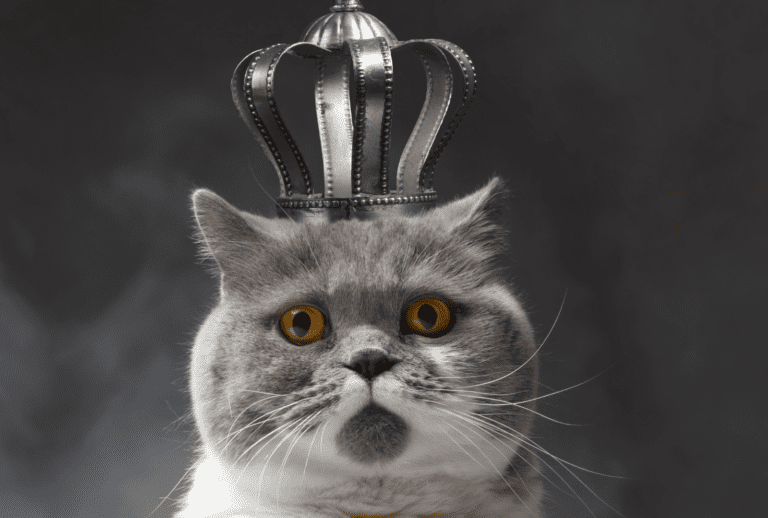
Our Cat Overlords are esteemed on this planet for their crabbiness, the way they dislike everything us incompetent humans try to do for them and how they tolerate us trying to feed them milk despite the fact that most adult cats are lactose intolerant.
As a devoted servant of your feline Supreme Leader, you undoubtedly like doing whatever you can to keep your much loved cat entertained and there is a plethora of toys out there to achieve this.
Whether they are a noisy toy connoisseur, a claw sharpening maniac or into attacking toy mice, you will be able to keep them happy and occupied. Some of these toys, however, are potentially hazardous, and, contrary to popular belief, no cat toy can be guaranteed to be fully safe.

Toys are an excellent method to stimulate your cat’s intellect, allow them to indulge their predator impulses, show their inherent pouncing and chasing talents, encourage them to exercise more and avoid boredom and separation anxiety.
Importantly, you may use toys to strengthen your bond with your cat by engaging in interactive play, and toys can provide a significant source of pleasure, particularly for indoor cats. Toys that move or make noise are extremely enticing to cats.
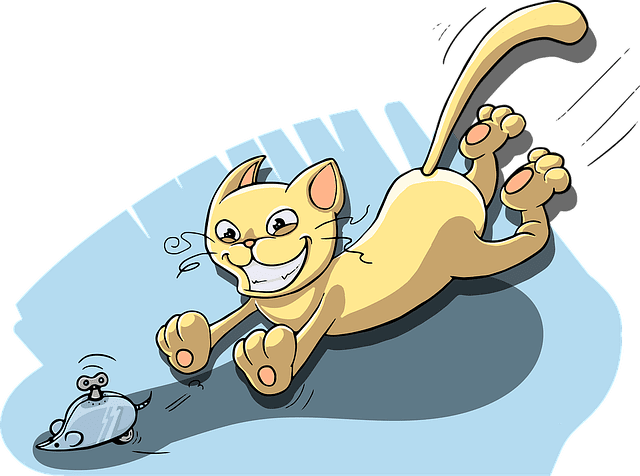
Toys that inspire cats to chase and pounce appeal to their innate predatory drive, thus they prefer toys that urge them to do so. Plastic balls, remote-controlled toy mice, and dangling toys are among them. Stuffed toys are designed to look like the ‘prey’ that cats enjoy chasing, tossing, and fighting.
Treat dispensing toys allow cats to engage in natural stalking behaviour by moving one of these units around until is releases the treats. Cats enjoy drinking from moving water sources that resemble streams. Cats appear to really enjoy water fountains, which will keep them hydrated throughout the day as well as keep them enthralled.
Cat Tunnels are a pleasure for cats because they allow them to engage in some of the natural behaviours that cats display in the wild, such as running, hiding, playing, and pouncing. Depending on your cat’s size and the space you have available, you can buy solitary one-way tunnels or multi-section tunnels that connect. Even a basic cardboard box with holes cut out may be a great place for your cat to play hide and seek.
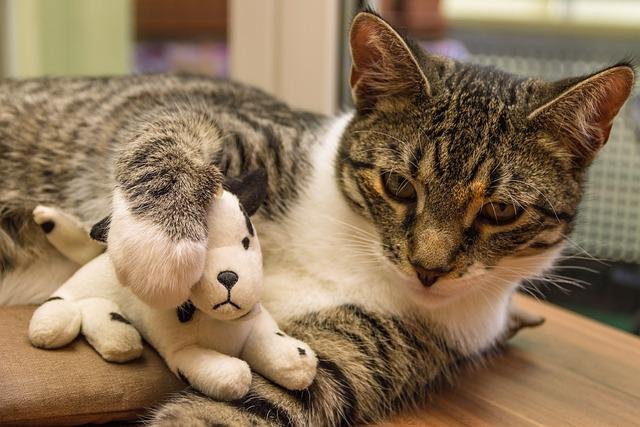
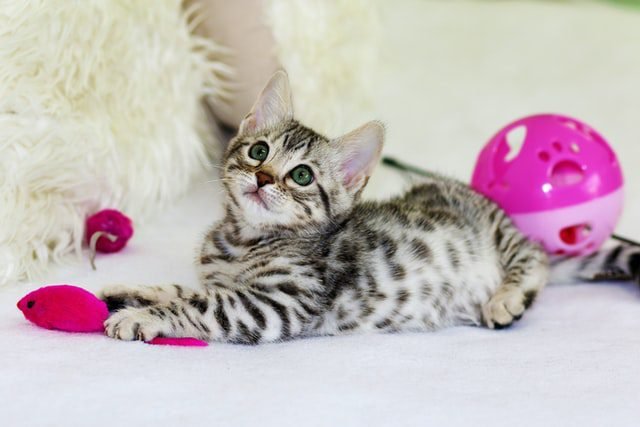
Cat exercise wheels are a terrific method to get your cat to exercise while also keeping them entertained. A hamster wheel for cats I suppose.
Climbing toys for cats enhance muscle development and give a new dimension to their fun. It also allows them to take in the scenery from a high vantage point, which stimulates them and helps them feel safe.
Although specific scratching posts should always be available, cat climbing furniture can be a fantastic method to keep your cat’s nails down and offer them something to scratch that isn’t your expensive lounge. Cat castles, ladders, trees, and hammocks are examples of cat climbing toys.
Aside from a large percentage of cat toys having the potential to cause harm, several household things, such as string, ribbon, dental floss, paper clips, rubber bands, feather toys and of course, plastic bags should never be given to your cat to play with.
Avoid toys with small parts inside and toys that are small enough for your cat to swallow.
Suffocation, ingesting, stabbing, strangulation, falling, drowning and choking are just some of the ways a cat can be harmed by the wrong toy or object if they were to try and play with it.
Any string-like or small pointy item, for example, can easily be swallowed and cause life-threatening damage to the intestines. Strangulation can also be caused by string-like materials. Feathers can lacerate the inside of your cat’s mouth, and plastic bags can cause asphyxia, choking, or intestinal blockage. Cheap toys with a lot of little, sharp bits can be easily destroyed by your cat’s keen claws. As a result, they pose a significant risk of exposing toy parts that could stab your cat or cause them to inadvertently consuming something that could cause choking or a blockage in their intestines. These dangers can also be posed by little toys or components of toys, such as bells, that your cat may ingest.
Your cat may be in danger of falling and harming themselves if they haven’t had much practise with climbing devices before. Cats are famed for always landing on four feet, but there’s no guarantee they won’t hit something and damage themselves on the way down if they’re climbing in a tight space with a lot of other objects around. Before purchasing a climbing tree for your kitten, wait until it is at least four months old.
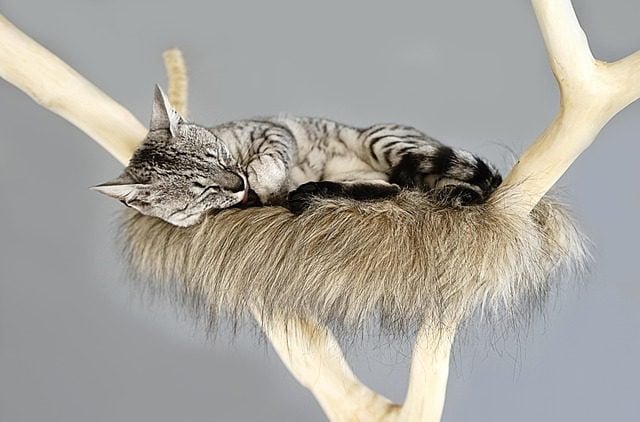
It’s thankfully extremely simple to keep your cat safe while they’re playing with their toys. Make sure you get climbing furniture that fits their size and experience level, and double-check that there aren’t any cables, ropes, or dangly parts that could catch them if they fall. Your cat will be able to play securely if the setting up is done correctly and there is enough space around the toy.
Remove any plastic eyes, noses, or other pieces that could be ingested if you buy your cat little hairy toys like toy mice. Feathers, bells, ribbons, and strings, for example, are all external pieces of toys that your cat could chew or ingest. Choosing interactive wand toys made of durable fabric textiles rather than string is a safer option.
Most essential, be sure to keep an eye on your cat when they’re playing with things that could cause injury. Toys with batteries, moving mechanical pieces, exterior small parts such as ornaments, dangling toys, and toys on a wand all fall into this category.
If your cat tries to eat these toys, your close surveillance will pay off and you’ll be able to prevent harm. When you’re not around, these are the toys you should keep in a box and out of reach of your cat.
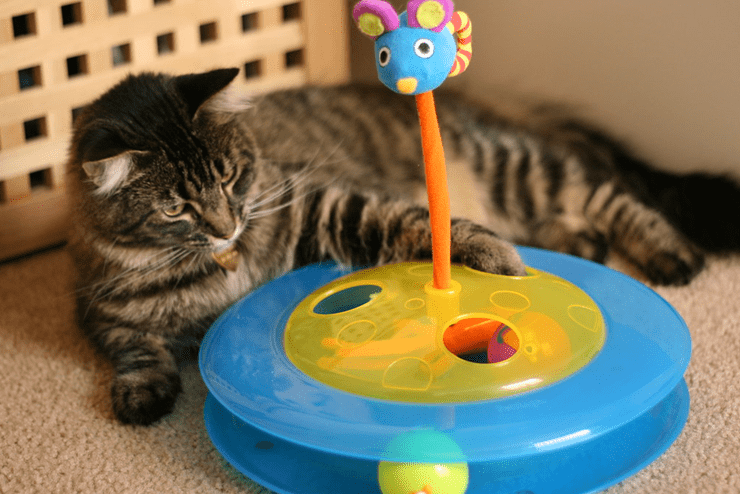
To be cautious, this should also apply to stuffed toys that could be ripped open, as the contents of some of these could cause choking or intestinal harm if swallowed. Inspect your cat’s toys for signs of damage or wear on a regular basis, and replace them as needed. Lastly, observe any directions included with the toy and keep an eye out for sharp edges or pointy components that could cause injury.
First and foremost, select toys that are age-appropriate for your cat. Kittens prefer items that engage their senses such as rattly balls. Of course, keep an eye on your kitten’s playtime to make sure they don’t break the toy or get into contact with anything dangerous or pointy. It’s critical to avoid playing with your cat with your fingers or hands from an early age, since this will teach them that your hands are play items that can be bitten or clawed at.
Adult cats frequently prefer more autonomous play, which allows them to exhibit their full spectrum of predatory behaviour.
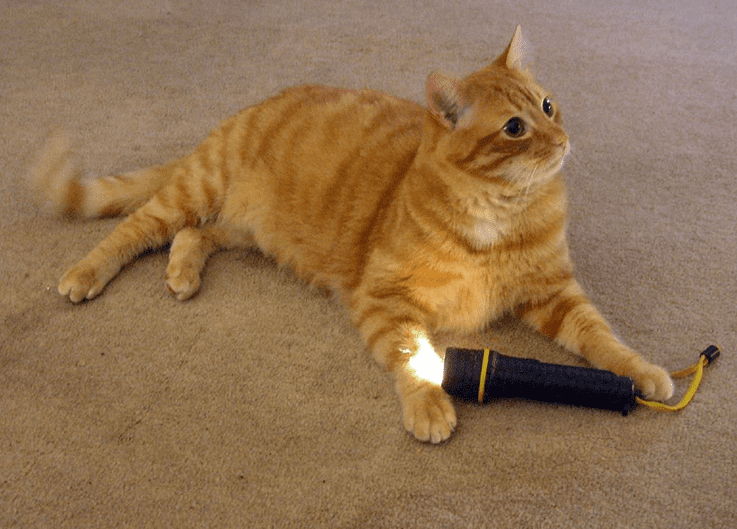
We all enjoy indulging our cats and spending precious time with them while playing and admiring their unique features.
Always choose toys that offer the least risk to your cat and just be careful about which toys you decide to leave with when you’re at work.
If you are attentive with your playtime supervision and toy checks, you can easily avoid any potential problem represented by your cat’s toys.
Toys play an important role in your Dog's life.
Walking your dog does not cover all of their physical and emotional needs, so getting the correct amount of the right kind of toys is crucial. Many pups and younger dogs exhibit destructive tendencies, which is understandable given their high energy levels.
Such detrimental habits emerge when they are left alone with nothing stimulating to do. As a result, dogs must play, have fun, and engage in other activities to burn off energy.
When you don’t have time or the opportunity to take them for a stroll and/or a play in the park, they’ll need something to occupy their time.
There are several fantastic puppy toys that can keep them thoroughly occupied and entertained while also assisting in their brain development and character development.
Furthermore, as a puppy’s teeth develop, he or she will seek out something to gnaw on. Chew Toys developed specifically for them will immediately discourage them from gnawing on your shoes, furniture, lounge cushions and anything else that their brain identifies as ‘chewable’.
Puppies are naturally inquisitive and will spend a significant amount of time exploring their surroundings; allowing them to intuitively ‘run and jump at,’ ‘play with,’ ‘bite on,’ and ‘attack at’ strategically placed ‘chew toys’ and other ‘play toys’ is far preferable to having them declare war on your house while you are at work.
Your goal must be to reduce any destructive behavior that might otherwise emerge when you’re at work. Dogs need exercise and there’s simply no way around that, fortunately, certain toys can trigger playful exercise and burn off a bit of energy during the day.
Although an additional cost, you might also consider paying a dog walker to come and walk you little mate during the day.
When a puppy is bored and has nothing to do, its mind can become fixated on a variety of situations in order to manufacture their own entertainment, which will most likely not go well for you. They will become too energetic and emotionally unstable towards items that would not hold their attention if you were at home playing with them.

These scenarios will appear as various behaviours such as chewing on just about anything that is fair game, excessive barking, racing around and jumping at the fence as a result of people strolling past your house and digging up your backyard on a daily basis.
Another situation where Pet Toys can help is with ‘Separation Anxiety.’ This is not a perfect fix by any means, but rather a very effective band-aid.
First things first though, you will need to determine whether your dog has separation anxiety. This issue may develop if your dog is strongly connected or dependent on you or your family members. They get extremely anxious and exhibit anguish based behaviours including as barking, damage, and leaving a large amount of excrement about the house while you are at work.
When you are home, look for other indicators of separation anxiety; most dogs with separation anxiety strive to stay near to their owners at all times, following you from room to room and rarely spending time outside alone. They frequently exhibit fear as soon as you begin to conduct the tasks that lead to you driving away in your car. They may also need a lot of physical contact and attention from you when you’re at home.
When you’re not there, the poor things can experience a variety of issues, not just the barking and destruction I mentioned earlier, but they can also become very restless, spend hours shaking and shivering, refuse to eat during the day, and become unusually quiet and withdrawn (doesn’t this just break your heart?). This can even happen after you’ve returned home if you decide to go out for a few hours. When you come home from work, dogs with separation anxiety are typically hugely excited and overly stimulated, so keep a watch out for the signs.
If separation anxiety is the problem, no amount of toys will solve it on their own; there are no “silver bullets” for this, but toys will help whilst you work through the issues to overcome this condition with your furry little friend.
You could consider feeding toys to assist with eating concerns while you are at work.
Your guide to understanding Cat Food.
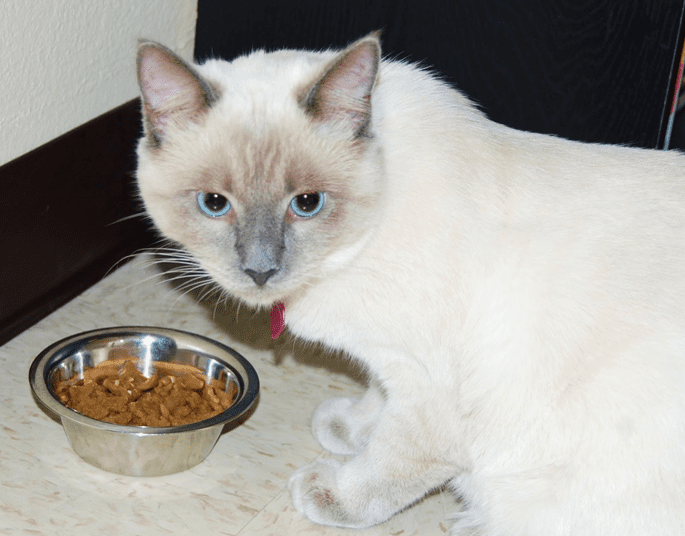
Your cat requires sufficient nourishment to live a long and healthy life.
Cats are a necessitate carnivores, this means they can only eat animal food to get the nourishment they need to be healthy. Cats began their journey in this world as hunters and ate food that was heavy in protein, moderate in fat, and low in carbohydrates and their diet still demands these broad proportions today. Cats also require a variety of additional nutrients, such as vitamins, minerals, fatty acids, and amino acids.
Although your cat needs portions of each vitamin to stay healthy, more than ‘just enough’ is a waste. This is particularly true for vitamins and minerals, thus supplementation is usually unneeded if a well-balanced and well-rounded diet is available. Supplements can be harmful to your cat and should be administered only after checking with a veterinarian. Clean, fresh water should be available at all times for cats.
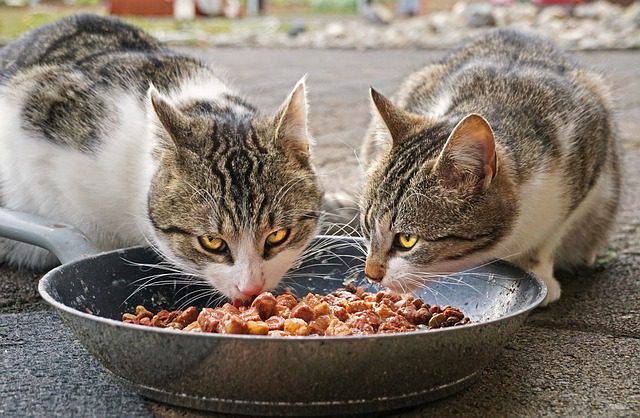
Commercial cat food is offered in three varieties: dry, semi-moist, and canned. These items differ in terms of water content, protein level, caloric density, palatability, and digestibility. Water accounts for approximately six to ten percent of dry food.
Depending on the recipe, a mixture of ingredients is combined, extruded, and dried into bite-sized pieces.
Ingredients may include:
· Meat and /or meat by-products
· Poultry and /or poultry by-products
· Grain and/or grain by-products
· Fish meal
· Fibre sources
· Milk products
· Vitamin and mineral supplements
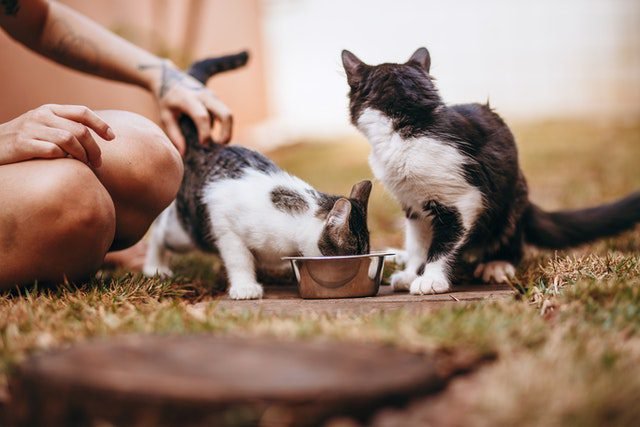
To make the food more appealing, the particles of dry food are frequently coated with flavour enhancers such as animal fat. Dry cat food is affordable, and because it does not dry up, it allows owners to leave food out for their cats to eat at their leisure. Dry food, on the other hand, may be less appealing to a cat than moist or semi-moist food, and it may also be less digestible, depending on the types and quality of the ingredients.
If you do use dry food, make sure to keep unused portions in a cold, dry place and don’t eat it over its expiration date. Owners frequently purchase huge quantities of dry food, which can be stored for months, so double-check the expiration date before feeding it to their cat. Many vitamins’ activity and effectiveness are reduced when food is stored for an extended period of time, and fats are more likely to become rancid. Dry cat food should be stored in an airtight container to avoid nutrient breakdown and maintain flavour.
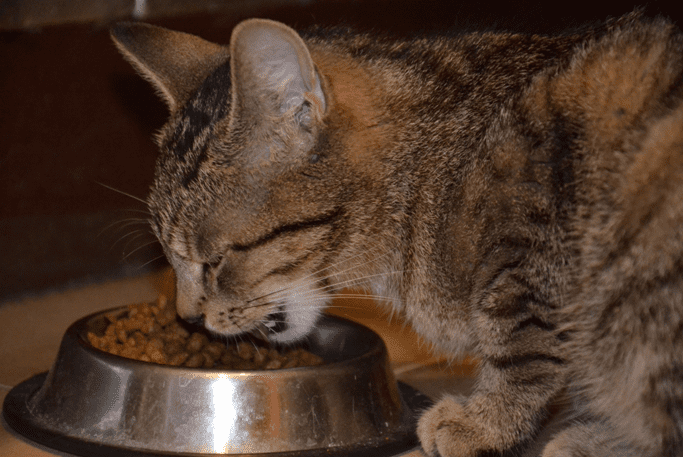
Meat and meat by-products are the main constituents in semi-moist cuisine, which has between 30% to 40% moisture content. Additional ingredients such as soybean meal, cereals, grain by-products, and preservatives are added during the manufacturing process.
Semi-moist food is often priced in the mid-range. Semi-moist meals may be more enticing to certain cats than dry cat food, and they can also be left out for a considerable time. This food, however, can dry up once the box is opened, making it less appealing and/or causing it to spoil.
Canned cat food has at least 70-75 percent moisture, making it a healthy supply of water in the diet. It is usually the most expensive sort of cat food but most cats find it to be quite tasty and will be their preferred option. There are many different varieties to choose from, which might be beneficial if your cat is a picky eater.
When unopened, canned cat food has the longest shelf life, but any unused portion of opened canned cat food should be kept refrigerated to retain quality and avoid spoiling. Meats like kidney and liver, as well as entire meat by-products, are common ingredients in gourmet canned cat foods.
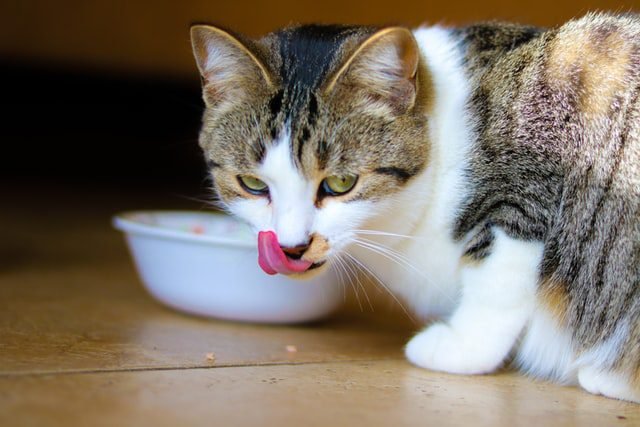
Because not all brands are created equal and certain products may be nutritionally insufficient, it is critical to carefully read the nutrition labels on such specialised cat food items to ensure that they come with a nutritional guarantee.
Commercially prepared cat food has been developed to give the right nutritional and calorie balance for your cat.
Reading the nutrition label on the packaging is the best way to compare cat meals. Pet food manufacturers must include nutritional information on the packaging. Most countries have mandatory labelling regulations that must be met.
A cat’s nutritional requirements change through different stages of life. From kitten to adult, for females this naturally includes pregnancy and lactation. The nutritional claim on a cat food label should specify the stage of a cat’s life cycle for which the food is full and balanced, as well as that it complies with any government regulations.
Some cat feeds are designed for all life stages, making the selecting process easier for owners who have many cats of various ages.
It’s also crucial to study the ingredients list before buying a cat food. The contents are listed in decreasing proportional weight order. Look for foods that mention meat, meat by-products, or seafood among the first few ingredients, as this suggests that the diet has enough animal-source nutrients to provide vital amino acids and fatty acids.
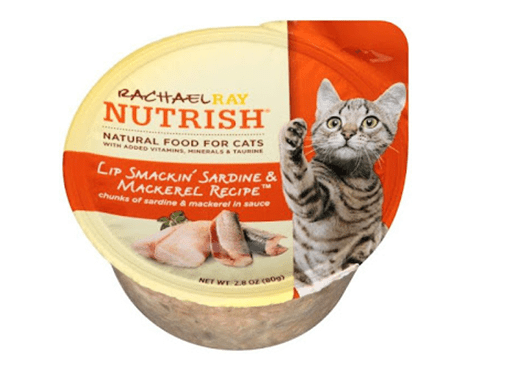
Once you’ve determined that a food is complete and balanced, the sort of food you choose may come down to your cat’s preferences. Some cats prefer canned food, while others prefer dry food, and still others prefer a combination of the two. Choose the ones that are most appropriate for your cat.
Making your own cat food is a tough and time-consuming operation, as the recipe may or may not contain the correct amounts and balances of nutrients for your cat. Cat owners are frequently recommended to utilise nutritionally balanced commercial diets unless a veterinarian recommends a home-made recipe for health reasons. In that case, your Vet will most likely propose a recipe created by veterinarians who have obtained animal nutrition accreditation.
While giving your cat a treat now and then isn’t inherently harmful, they are rarely a nutritionally complete and balanced source of nutrition and should be given only on rare occasions.
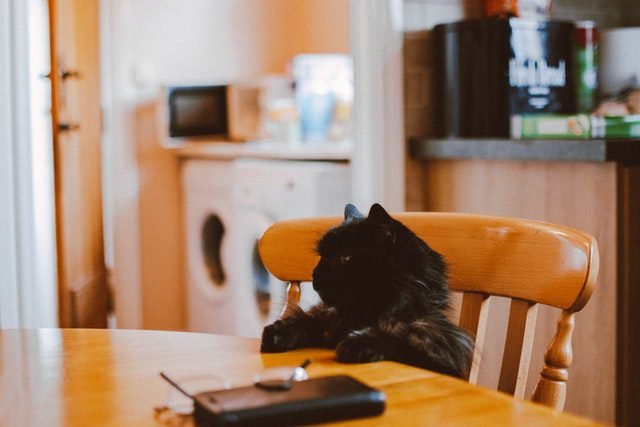
Treats should not make up more than around 15% of a cat’s daily eating. While raw meat is high in nutrients, it is not recommended for cats as a meal or treats since it can spread toxoplasmosis and other infectious diseases. After devouring canned fish foods intended for people, some cats have developed potentially serious neurological problems.
Because many cats are lactose intolerant and might suffer gastrointestinal problems if fed dairy products, milk is not generally advised as a treat for cats. Cats can be picky when it comes to where they eat. Heavy traffic areas, noise, the presence of other animals, unclean food containers, and nearby litter boxes can all dissuade a cat from eating. Try to be aware of your cat’s dietary habits and make any required changes.
Another vital consideration is maintaining a healthy weight. The amount of food that cats require to avoid being overweight or underweight varies widely. Obesity is the most prevalent nutritional issue in cats, and it puts them at risk for a variety of health issues including as arthritis and diabetes. Request assistance from your veterinarian in determining your cat’s ideal body weight, and then follow their recommendations for changing your cat’s diet to achieve and maintain that weight.
Although many cats are happy to consume only one type of food, others may acquire fussy eating habits and become highly picky about which foods they will eat. Feeding your cat two or three different cat feeds gives flavour variety and may help your cat from establishing a single food preference.
A cat that refuses to eat may develop serious health problems. This is true for sick cats with no appetite, cats on a diet, and finicky cats that refuse to eat. A veterinarian should be consulted if your cat refuses to eat and is losing weight.
Maintaining your cat’s health requires a nutritious, well-balanced food. Find out what your cat should eat at each stage of its life.
Not all dog food is the same, you need to do some research on this subject.
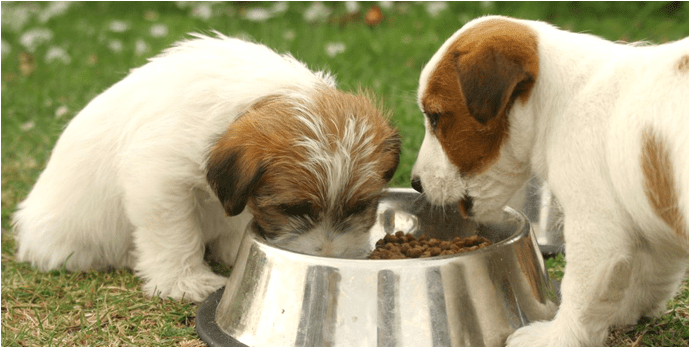
I feel it is safe to say that the most common questions a Pet Parent has regarding their dog are about diet and nutrition. Feeding an appropriate amount of a well-balanced diet to your dog is vital for its general health and well-being. To know how and what to feed your dog, you must first comprehend their nutritional requirements and how these requirements have evolved through time.
Because of their nutritional needs, dogs’ dental structure and intestinal tract have adapted to an omnivorous diet. This suggests that, in most situations, dogs may meet their nutritional needs by eating a combination of plant and animal foods. The quality and digestibility of these crucial dog food components are more important than the supply of proteins and fats. Dogs can thrive if they are fed a well-balanced vegetarian diet. An all-meat diet, on the other hand, would be unbalanced and would fall short of meeting all of a dog’s nutritional requirements.
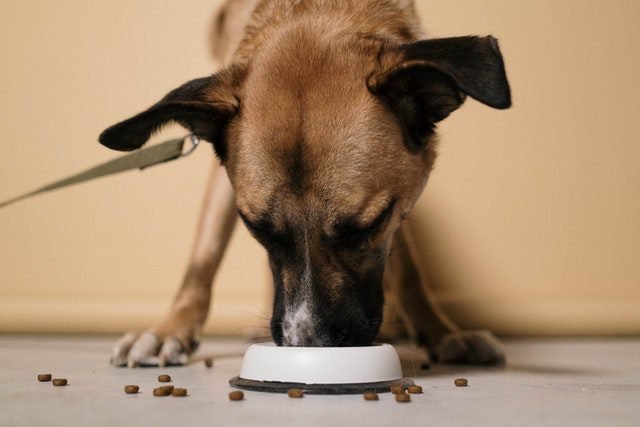
The majority of dog owners feed their pet’s dry kibble or canned wet food. Although we may not find these processed foods appealing, they include all of the nutrients that dogs require to keep healthy. Commercial dog diets of excellent quality are tightly controlled and have undergone extensive testing by veterinarians. In contrast to cats, dogs are not strict carnivores. Domestic dogs can acquire nutrition from cereals, fruits, and vegetables, while meat makes up the majority of their diet.
Vegetarian or non-meat meals are more than just fillers; they’re also high in vitamins, minerals, and fibre. A healthy dog diet includes meat, vegetables, grains, and fruits. The best dog diets provide high-quality versions of these nutrients that are easy for your dog to digest. The best dog food should meet your dog’s nutritional requirements. While most commercial dog food brands are designed to cover at least the basic nutritional needs of dogs, it’s important to remember that no two dogs have the same nutritional needs.

Throughout their lives, dogs require a variety of nutrients in varying amounts. Because the nutritional demands of a puppy differ from those of an adult dog, you should give your puppy a puppy formula or a “all life stages” diet. Dogs of the larger breeds require different nutrition than dogs of smaller breeds. A dog food label does not show the quality of the ingredients or where they are from, and some manufacturers separate the ingredients to ensure an even distribution. Different varieties of corn, for example, can be listed independently.
Despite the fact that the product contains a substantial volume of corn, it’s ranking on the ingredient list is reduced. Meat is another difficult component to work with. Because entire meats include a substantial quantity of water, the final percentage of meat is lower than it appears. Meat meal, on the other hand, may seem less attractive, yet it contains more meat than “whole meats” because there is no water weight to throw off the computation.

While the ingredient list might not tell you the quality of the ingredients, it does tell you what is in the food. This is especially important for dogs with special dietary needs or allergies and is also useful for owners who wish to feed their dogs specific sources of fibre, protein, and carbohydrates. The minimum amount of nutritional information provided for users on a dog food label is determined your state or country’s regulatory requirements.
Pet food regulations in your nation will normally have stringent requirements to ensure that a product is comprehensive and balanced for dogs. Complete and balanced meals must contain the bare minimum of all nutrients required by dogs, as revealed by the certified analysis. The analysis must include the minimum amount of crude protein and fat, as well as the maximum amount of water and crude fibre.
The research, however, does not specify the exact amount of these elements, implying that there is potential for considerable fluctuation. A product’s average nutritional profile is frequently a superior tool for analysing it.
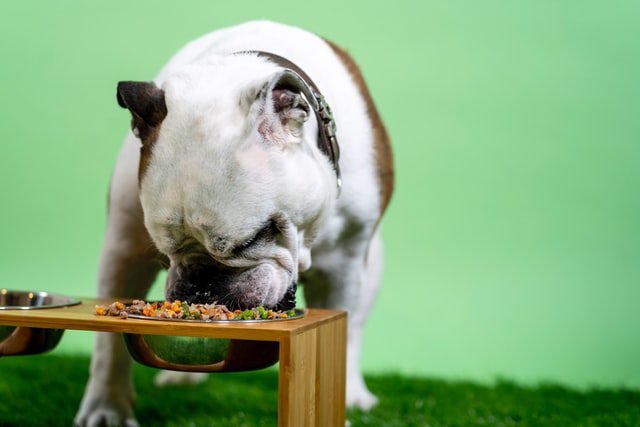
For additional information about the dog food company’s product, you can always contact them directly. A reputable company that cares about your dog’s well-being should be happy to address your concerns and, in many cases, will go above and beyond what is provided on the website or on the product label. The nutritional requirements of small and large breed dogs differ.
Because large breed dogs are more prone to musculoskeletal disorders than smaller breeds, they frequently require large-breed dog food with distinct nutrient balances to maintain musculoskeletal health, particularly as puppies.
Small breed dogs, on the other hand, can choke on large-sized kibble and have specific nutritional needs that are met by small-breed dog food. Look into your dog’s breed to see if there are any special nutritional needs you should be aware of.
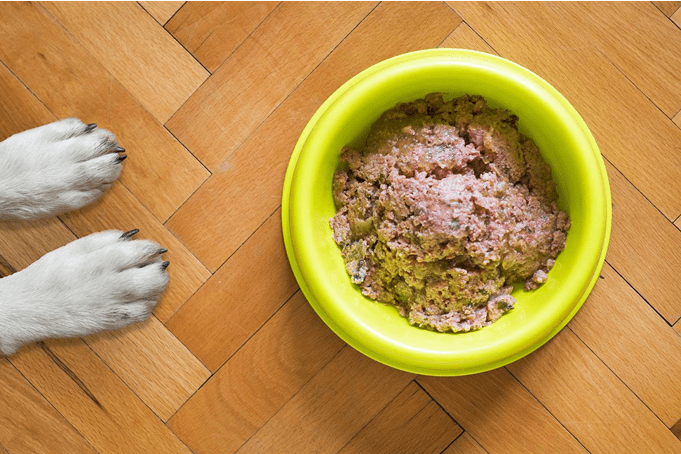
A dog’s nutritional requirements change throughout their lives. Puppies have different nutritional requirements than adult dogs, and senior dogs often require special diet attention. Most dog food brands have specially created puppy diets for each stage of a dog’s life, which makes narrowing down your options easier. If you’re unsure about which dog food is ideal for your dog’s life stage, see your veterinarian to find out.
A puppy’s nutritional needs differ from those of an adult dog. This is especially true in the case of large breeds. A large breed puppy nutritional needs to be met as their growth must be supported to avoid bone and joint problems. Other puppies thrive on “puppy food” as well ‘all of life stages’ food. A puppy’s food requirements are determined by the size and breed of your puppy.
Always seek guidance from your veterinarian on puppy nutrition and how to transition puppies to adult dog food. Senior dogs, mainly those aged 7 and up, have different nutritional requirements. Younger senior dogs may suffer with obesity, while older senior dogs may struggle with underweight, which pretty much explains the wide range of foods available for senior dogs. It’s possible that deciding on the best senior dog food boils down to what your dog enjoys. Many senior dogs like wet food, while others may want their meal to be reheated to bring out the scents.
Finally, your veterinarian can assist you in selecting the best dog food for an older dog.
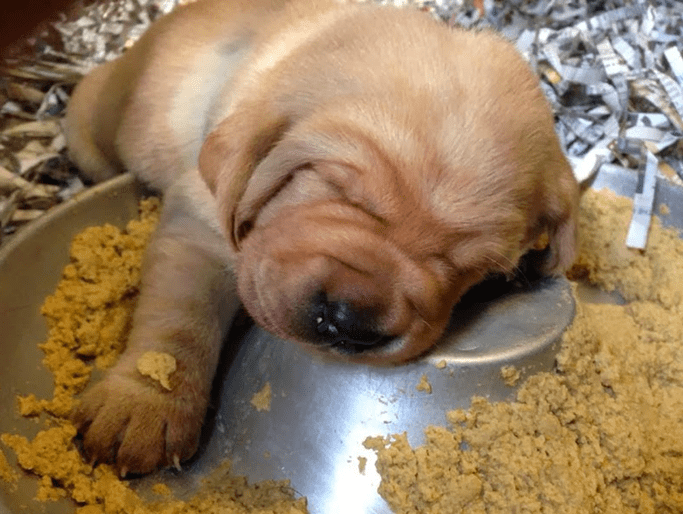
Dry dog food is the most widely available and affordable dog food. Because it includes around 90% dry matter and 10% water, dry dog food does not require refrigeration, which is its principal advantage over wet dog food. It’s much easier to store as a result of this. Ingredients such as meat and wheat are combined and cooked to make dry dog food.
This technique transforms the food’s starches into an easily digestible form while also eliminating contaminants and flash sterilising the contents. On the shelves, there are many different types of dry dog food. The ideal dry food for your dog is determined by his or her nutritional requirements. In general, a higher-quality dry dog food with the right ingredients for your dog’s age and breed is the best option, but consult your veterinarian or a veterinary nutritionist for advice on the healthiest option for your pet.
Wet dog food, often known as canned dog food, is usually more appealing than dry dog food and can help picky eaters eat more. However, it is slightly more expensive. Many of the same ingredients can be found in both wet and dry dog food, though not in the same amounts. Wet food contains more fresh meat, chicken, fish, and animal by-products, as well as more textured proteins derived from cereals. Canned dog food has a long shelf life, but it must be refrigerated once opened. Like dry dog food, the ideal wet food for your dog is determined by your dog’s age, breed, and any unique dietary needs or allergies. Consult your veterinarian about the best wet dog food for your dog.
It is ultimately up to you to choose the best dog food for your furry buddy. You are the one who sees your dog on a regular basis as the owner. If your dog has a good appetite, produces firm, healthy faeces, and is active and fit, then your dog food is generally ok. Your veterinarian is an invaluable resource for all things diet and nutrition for your dog. They understand pet nutrition better than most owners and have access to research and resources that most owners do not. Your veterinarian can assist you in narrowing down your options and should be happy to answer any questions you may have about your dog’s food.
Contact us

Address
PO Box 784. Muswellbrook
New South Wales, Australia, 2333
Email Us
admin@mypetsup.com
Call Us
+61 448 687 451

